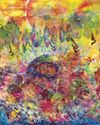
There are many ways to classify political ideologies and map out the boundaries between them. I cordially invite you to consider mine. Although my examples are drawn mainly from the United Kingdom’s political history, I think it is broad enough and subtle enough to describe the ideological landscape of most Western secular countries, and to help clarify the nature of many of the disagreements in recent political life. So consider this chart. Its four quarters could be respectively called ‘hierarchical-communitarian’ (top right), ‘egalitarian-communitarian’ (top left), ‘hierarchical-liberal’ (bottom right) and ‘egalitarian-liberal’ (bottom left). Strange terms perhaps; but as we shall see, together these divisions enable us to delineate the major political positions taken in today’s world. So let’s look at these four positions, and the relationships between them.
Traditional Conservatism
The ‘hierarchical-communitarian’ slot in the top right corner is where traditional conservative thinkers live. For them, the central concern of politics is what is sometimes called ‘The Problem of Order’, and we can have considerable sympathy with these concerns. Traditional conservatives ask how societies are meant to maintain cohesion and social peace in the face of the dizzying pace of social change. This question is hardly new – Aristotle asked it – but since the Industrial Revolution it has become increasingly insistent. In our own era, racked as it is by concerns about mass migration and technological disruption, climate change, war and waves of pandemics, the question of how some semblance of social continuity is to be maintained is particularly acute.
This story is from the April/May 2022 edition of Philosophy Now.
Start your 7-day Magzter GOLD free trial to access thousands of curated premium stories, and 9,000+ magazines and newspapers.
Already a subscriber ? Sign In
This story is from the April/May 2022 edition of Philosophy Now.
Start your 7-day Magzter GOLD free trial to access thousands of curated premium stories, and 9,000+ magazines and newspapers.
Already a subscriber? Sign In

Metaphors & Creativity
Ignacio Gonzalez-Martinez has a flash of inspiration about the role metaphors play in creative thought.

Medieval Islam & the Nature of God
Musa Mumtaz meditates on two maverick medieval Muslim metaphysicians.

Robert Stern
talks with AmirAli Maleki about philosophy in general, and Kant and Hegel in particular.

Volney (1757-1820)
John P. Irish travels the path of a revolutionary mind.

IT'S A WONDERFUL LIFE
Becky Lee Meadows considers questions of guilt, innocence, and despair in this classic Christmas movie.

"I refute it thus"
Raymond Tallis kicks immaterialism into touch.

Cave Girl Principles
Larry Chan takes us back to the dawn of thought.

A God of Limited Power
Philip Goff grasps hold of the problem of evil and comes up with a novel solution.

A Critique of Pure Atheism
Andrew Likoudis questions the basis of some popular atheist arguments.

Exploring Atheism
Amrit Pathak gives us a run-down of the foundations of modern atheism.